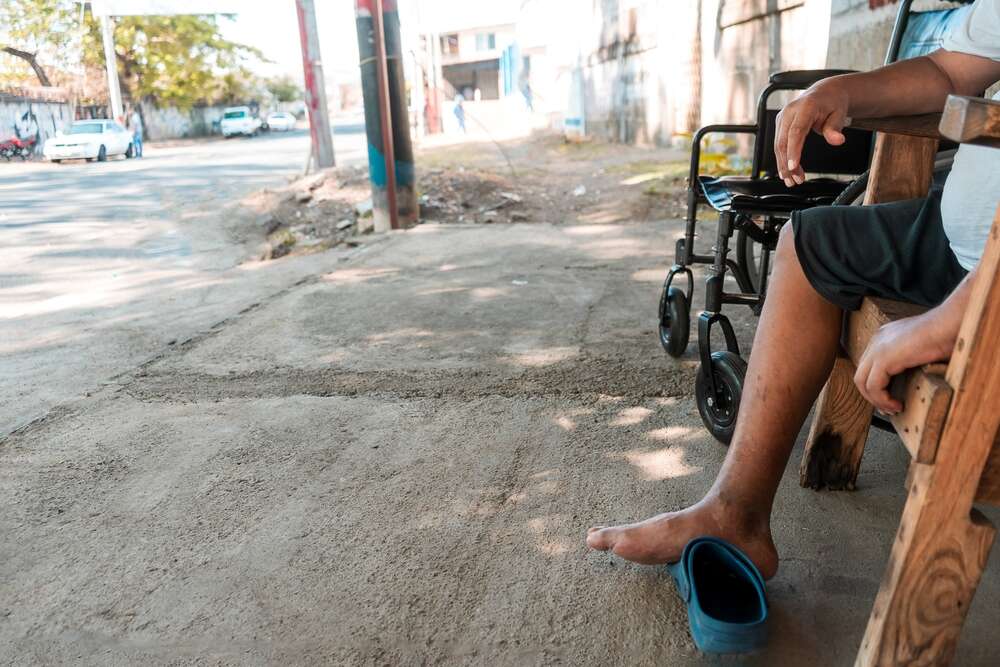
More than 17 million disabled people in the US are not receiving federal housing assistance, even though they are eligible, according to new research.

Analysis by the Urban Institute found that US federal housing programmes are falling far short of what is needed to meet the needs of the country’s disabled people, who face unique barriers when it comes to housing accessibility and affordability.
In most of the US, the “low income” indicator – where someone’s income is below 80% of the area median – is used to determine housing assistance, whether that be public housing or vouchers that can be used in the private market.
But despite 21 million disabled people falling into this income category, just 3.4 million of them actually receive housing assistance.
Among those on extremely low incomes, only a quarter are receiving housing assistance.
“There are 18 million people with disabilities who are eligible for federal housing assistance and not getting it,” Susan Popkin, a fellow at the Urban Institute’s Metropolitan Housing and Communities Policy Center and the co-lead of their disability equity policy initiative, tells City Monitor. “And that’s an underestimate since it doesn’t include people who are unhoused.”
For disabled people, who are struggling to afford housing, this means they could be forced to live in homes that do not fit their support needs, or even forced into institutional settings because they can’t find a home on the private market.
Popkin says there needs to be an increase in housing assistance, but also that there needs to be a significant increase in affordable housing supply, as well as housing supply across the board, to increase stock and stop prices from being driven up.
“We're in the worst affordable housing crisis in generations in the United States and that is not letting up,” Popkin says. “We have an overall problem of a very challenging housing market, and it’s affecting disabled people especially.”
Do disabled households receive equal pay?
There are 39 million people aged 15 and older living with a disability in the US, equal to about 12% of the population, and they tend to have far lower incomes than the non-disabled population.
The median income for a household with at least one disabled person is $42,000, over 40% lower than the median income for households with no disabled members. In fact, more than half of disabled adults in the US – 21 million people – are classified as low income, meaning their income is less than 80% of the area median income (AMI).
Some 8.6 million people with disabilities, 22% of the disabled adult population, have “extremely low income” (meaning their income is less than 30% of the AMI) compared with 8% of the non-disabled population.
In 2021, 23% of disabled people were working, compared with 69% of the non-disabled population. This is in part due to age distribution – a quarter of disabled people are aged 75 and older, although that age group makes up just 6% of the non-disabled population.
What households do disabled people live in?
Disabled people are more likely to be the head of their household than non-disabled people (58% versus 47%), in large part due to the age distribution. They’re also more than twice as likely to live alone.
Of those who are not the head of their household, disabled people are more likely to live with someone other than a spouse.
One in ten disabled adults lives with a parent head-of-household, the same as for non-disabled adults. But disabled people are more likely to live with a different adult family member head-of-household, such as a sibling.
The Urban Institute says this relationship often presents significant challenges for the disabled population. Out of disabled people who live with a non-spouse adult family member, such as a parent or sibling, 52% of those head-of-households are over 55 years old, compared with 41% of non-disabled people.
This corresponds to roughly three million households where an ageing head of household houses a disabled person, which places the disabled person in a potentially vulnerable situation. As the head of household ages, the security of the housing may be under threat, or the head of the household may struggle to provide the care support needed.
[Read more: The stark disparity across internet access in the US]






